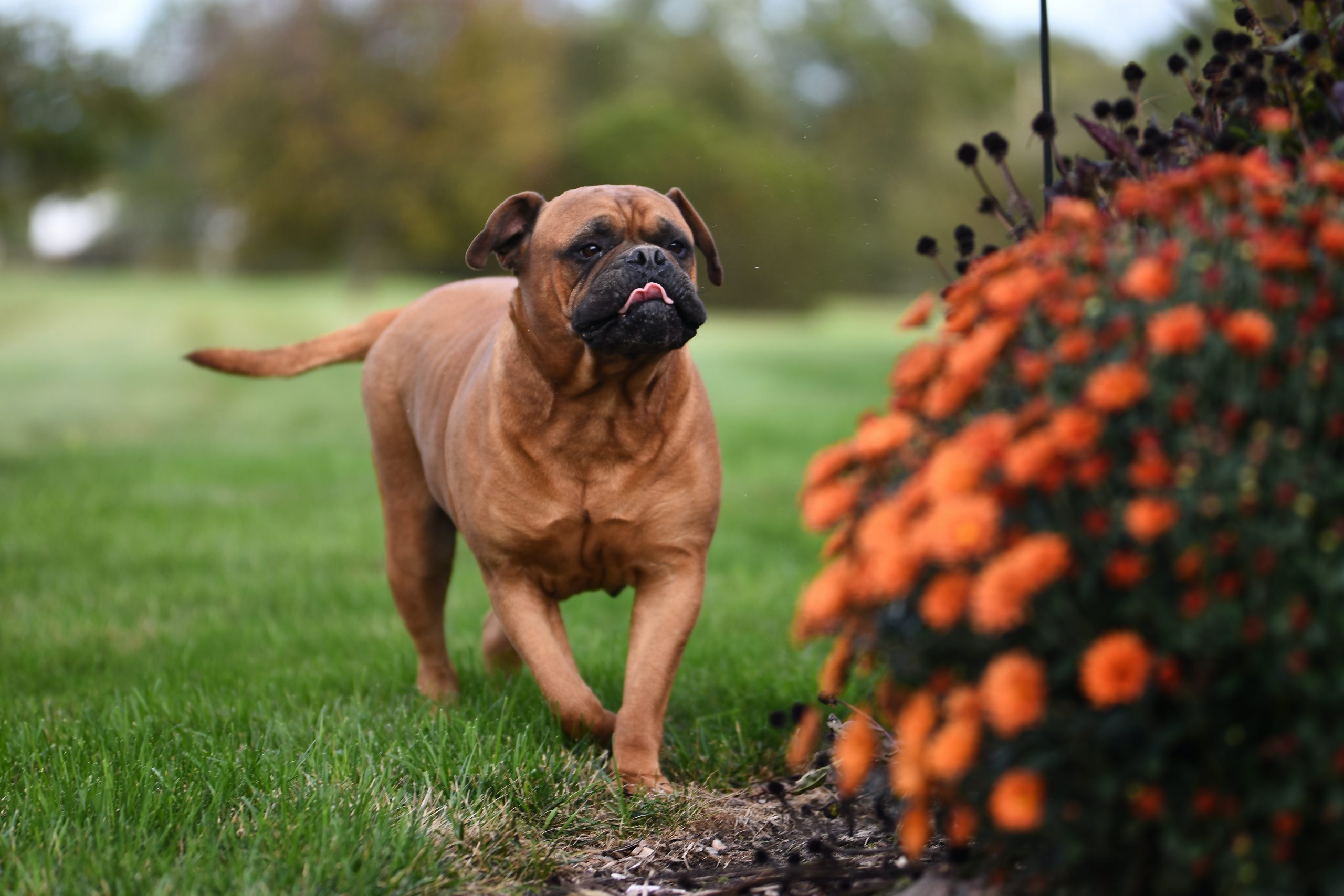Pets
What’s The Chew Pressure of a Bullmastiff & Does It Harm?
Bullmastiffs, with their imposing stature and highly effective physique, typically pique curiosity concerning their chew pressure. As guardians of properties and households, their potential for defense is simple. However how formidable is the Bullmastiff’s chew, and does it inflict ache? This text dives into the nuances of the Bullmastiff’s chew pressure, exploring its energy and its implications.
Historic Background of the Bullmastiff
To know the Bullmastiff’s chew pressure, one should first take into account its historic roots. Originating in England throughout the late nineteenth century, Bullmastiffs had been bred as guard canines for estates, warding off poachers. A cross between Bulldogs and Mastiffs, the Bullmastiff inherited energy and tenacity from each mum or dad breeds. The canine’s lineage suggests an inherent capability for a strong chew, designed for deterrence and protection.
Chew Pressure Metrics: Setting the Customary
Chew pressure is usually quantified utilizing PSI (Kilos per Sq. Inch). This measure signifies the strain exerted when an animal clamps its jaws shut. For reference, human chew pressure averages round 120-140 PSI, whereas a few of the strongest canine biters can exceed 500 PSI.
The Bullmastiff’s Chew in Numbers
Bullmastiffs, given their substantial dimension and lineage, possess a potent chew pressure. Estimates place the Bullmastiff’s chew between 250-300 PSI. When in comparison with different breeds, this locations the Bullmastiff among the many stronger biters, however not on the very high. The breed’s chew, whereas forceful, is commonly delivered with restraint until the canine perceives a major risk.
The Ache Issue: How Does a Bullmastiff’s Chew Really feel?
With a chew pressure surpassing 250 PSI, it’s simple {that a} chew from a Bullmastiff could be painful. A number of elements can decide the extent of ache skilled:
- Severity of the Chew: A warning nip is way totally different from a full-force chew. Whereas Bullmastiffs are skilled to restrain and deter somewhat than assault, their bites can nonetheless inflict severe hurt in the event that they really feel provoked.
- Location of the Chew: A chew to a fleshy a part of the physique could be much less dangerous than one to a bony space or close to very important organs.
- Particular person Ache Tolerance: Ache is subjective, and what one particular person finds excruciating, one other would possibly discover bearable.
Temperament of the Bullmastiff and Its Relation to Biting
Regardless of their imposing presence, Bullmastiffs are typically calm, loyal, and affectionate, particularly in the direction of their households. They’re protecting by nature, however not overly aggressive. Correct coaching and socialization from a younger age can reduce undesirable biting behaviors and reinforce their pure inclination to protect with out pointless pressure.
Minimizing Biting Incidents with Bullmastiffs
Proudly owning a Bullmastiff comes with tasks, given their dimension and energy. To stop potential biting incidents:
- Early Coaching: Educate your Bullmastiff chew inhibition and instructions like “depart it” from a younger age.
- Constant Socialization: Expose your Bullmastiff to totally different environments, folks, and animals to make sure they’re well-adjusted and non-aggressive.
- Be a Accountable Proprietor: All the time supervise your Bullmastiff, particularly round unfamiliar folks or animals. Use a leash in public areas.
Conclusion
The Bullmastiff’s chew pressure is a testomony to the breed’s historic function as guardian. Whereas their chew is undeniably highly effective, Bullmastiffs are sometimes reserved, utilizing their energy judiciously. Homeowners should respect this potential and be sure that their Bullmastiff is well-trained and socialized, guaranteeing security for all and showcasing the breed’s true nature as light giants.
Ceaselessly Requested Questions About Bullmastiff Bites
1. How sturdy is a Bullmastiff’s chew in comparison with different canine breeds?
The Bullmastiff has a chew pressure estimated between 250-300 PSI, making it one of many stronger biting breeds, although not the strongest. For comparability, people common round 120-140 PSI. Some bigger breeds might need a chew pressure that exceeds that of a Bullmastiff.
2. Are Bullmastiffs naturally aggressive?
No, Bullmastiffs aren’t naturally aggressive. Whereas they had been traditionally bred to discourage poachers, their main methodology was to trace and pin, to not assault. With correct coaching and socialization, Bullmastiffs are calm, loyal, and affectionate, particularly in the direction of their households.
3. What ought to I do if my Bullmastiff begins exhibiting aggressive tendencies?
If a Bullmastiff begins exhibiting aggressive behaviors, it’s essential to seek the advice of with knowledgeable canine coach or behaviorist. Early intervention, constant coaching, and understanding the foundation of the aggression are very important. Moreover, guaranteeing your Bullmastiff has common train and psychological stimulation can cut back undesirable behaviors.
4. How can I prepare my Bullmastiff pet to keep away from undesirable biting?
Coaching a Bullmastiff pet to keep away from pointless biting begins with chew inhibition classes throughout their early developmental phases. Socializing them with numerous folks, environments, and different animals may even assist. Instructing instructions like “depart it” or “drop it” can forestall potential chew conditions.
5. Is a Bullmastiff’s chew harmful?
Any canine chew might be harmful, and given the Bullmastiff’s sturdy chew pressure, a chew can inflict severe hurt, particularly if it’s a full-force chew. Nonetheless, Bullmastiffs are typically not liable to biting with out provocation and usually tend to show restraint.
6. Why did my Bullmastiff chew with none obvious purpose?
Canine hardly ever chew with out a purpose. Widespread causes can embody concern, ache, territorial conduct, or being provoked. It’s important to look at the context of the scenario and seek the advice of with a veterinarian to rule out any well being points.
7. How can I guarantee my Bullmastiff doesn’t chew strangers or company?
To make sure your Bullmastiff doesn’t chew strangers or company, correct introduction methods are essential. All the time supervise interactions and train company learn how to strategy and deal with your canine. Early and constant socialization, mixed with obedience coaching, can considerably cut back the danger of undesirable biting.
8. Do Bullmastiffs chew extra often than different breeds?
No, Bullmastiffs don’t chew extra often than different breeds. Their temperament is usually calm and protecting, however not overtly aggressive. Correct coaching and socialization can additional reduce any biting tendencies.
9. Are Bullmastiffs good with youngsters, given their sturdy chew?
Sure, Bullmastiffs might be wonderful with youngsters when raised with them and socialized correctly. Nonetheless, on account of their dimension and energy, it’s important to oversee interactions between Bullmastiffs and younger youngsters. Youngsters also needs to be taught learn how to work together safely and respectfully with canines.
10. How can I cut back the probabilities of my Bullmastiff biting out of concern or anxiousness?
Decreasing concern or anxiety-based biting entails making a safe setting to your Bullmastiff. Constructive reinforcement coaching, avoiding unfavourable or punitive measures, and offering common train and psychological stimulation are important. In case your Bullmastiff shows indicators of utmost anxiousness, seek the advice of with a veterinarian or canine behaviorist for specialised methods and potential therapies.


